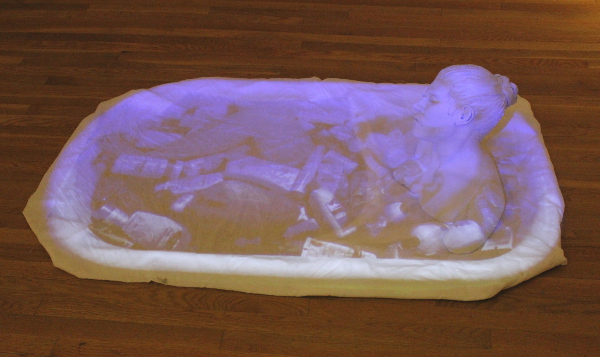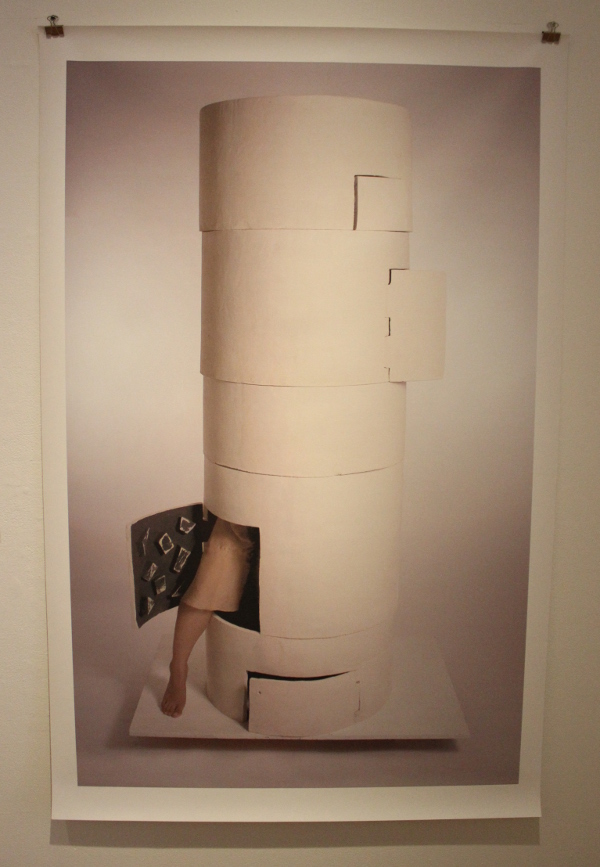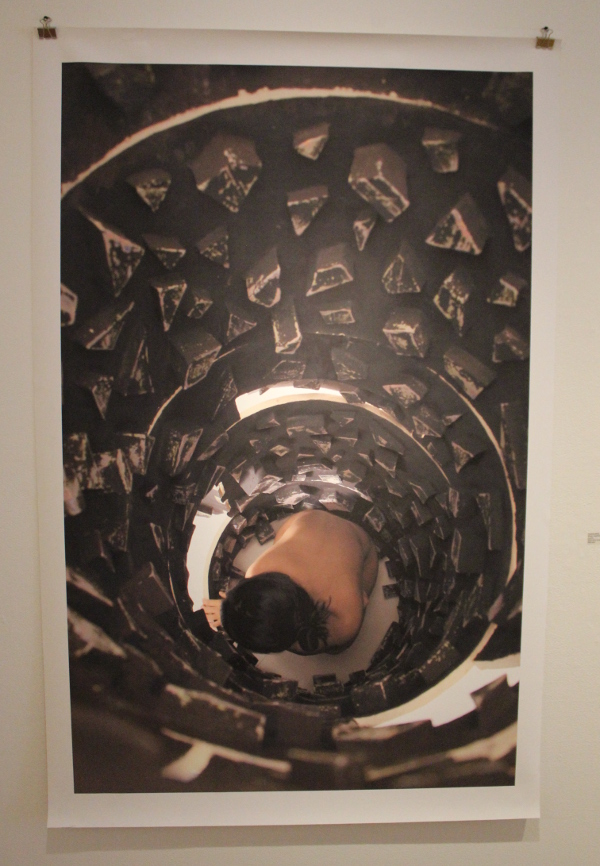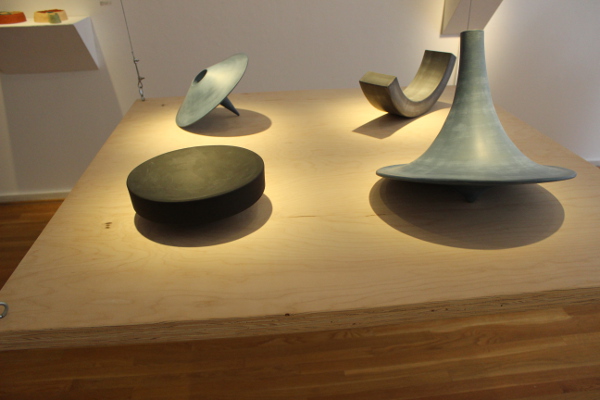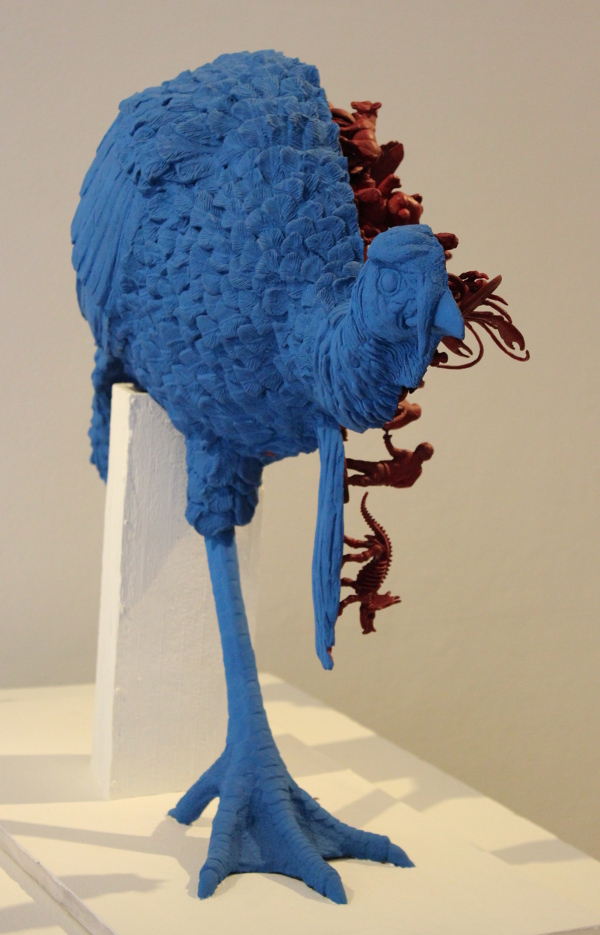
Graduate students test the limits of ceramics at The Clay Studio
For a decade, The Clay Studio has awarded $15,000 to 30 emerging ceramics artists through its annual Marge Brown Kalodner Graduate Student Exhibition. Fourteen of these participants have gone on to become residents artists at the Clay Studio, a Knight Arts grantee. Now in its eleventh year, the exhibition draws from some of the best up-and-coming names in the world of clay and ceramic art by assembling shows of unrivaled quality in the field.
Adriel Tong presents a piece that is literally a two-for-one deal. The earthenware “Red White and Blue” from the street side window looks like merely a bright blue turkey statue, but Tong proceeds to dissect the bird with a symmetrical cross-section split directly down its center. Not quite a biological model, the other side is a deep shade of red, but instead of organs, it is filled with a hodgepodge of figurines: people, dinosaurs, a peace sign, a shark and even a steam engine. Certainly not the type of Americana one might expect from a work with such a title, it is a detailed diorama of questionable origins inside the body of an almost lifelike animal; its name seems to be mostly for descriptive purposes, and it definitely catches one’s eye before any patriotic implications are made.
Sarah McNutt, “Everyday Neuroticism.”
Sticking up from the floor near the back of the gallery, there is the head and upper body of a white ceramic woman, apparently submerged in a tub. The basin she rests in is just a sheet of fabric with a video projection of bottles and tubes of various bath and beauty products. These bottles move ominously while the solid bust remains just as eerily stationary beneath the light. Is there something alive other than the woman moving amidst all the trash? Are these containers just floating around in the water? It’s hard to tell, but the title of Sarah McNutt’s “Everyday Neuroticism” delivers the sinking feeling that we experience while watching it, unlike the near bait-and-switch of Tong’s turkey’s title. It seems to criticize either the marketing of the amassed products or the waste they produce, but no matter how one interprets it, the clutter feels rather claustrophobic.
Nayoung Jeong, “Column.”
Present in photo form only, Nayoung Jeong’s “Column” offers us a glimpse of a truly massive piece of sculptural ceramic work. The structure is a round, hollow pillar composed of what appear to be five vertical segments, some of which contain hinged doors. As both prints hanging in the Clay Studio exhibit demonstrate, the whole piece is large enough to fit an entire person inside. Geometrical black protrusions cover the interior like some perverse hybrid of an iron maiden and a rock climbing gym. This may not be the sturdiest bunker, but its almost militaristic openings make it seem like some type of safe house or watchtower nonetheless.
Nayoung Jeong, “Column.”
On a square wooden platform hanging by four wires, we find the rounded, mobile sculptures of Brooks Oliver. This so-called “Wobble Table” is obviously constructed to swing, and with its momentum, the curved objects on it twist and turn as well. In a medium so often perceived as brittle or delicate, the anxiety of such motions is palpable even when these forms are at rest. The engineered items are also playful though, some of them modeled after spinning tops which lend a sense of childlike wonder to the scene. By placing these pieces in such a precarious place, Oliver highlights their fragility, their physics, and tests the limits of traditional ceramic display.
Brooks Oliver, “Wobble Table.”
While the Eleventh Annual Marge Brown Kalodner Graduate Student Exhibition only runs through August 31, the Knit Lab which explores machines that combine knitted fabric with ceramics just began and will remain at the Clay Studio through September 13.
The Clay Studio is located at 137-139 North 2nd St., Philadelphia; 215-925-3453; theclaystudio.org.
Recent Content
-
Artsarticle ·
-
Artsarticle ·
-
Artsarticle ·
